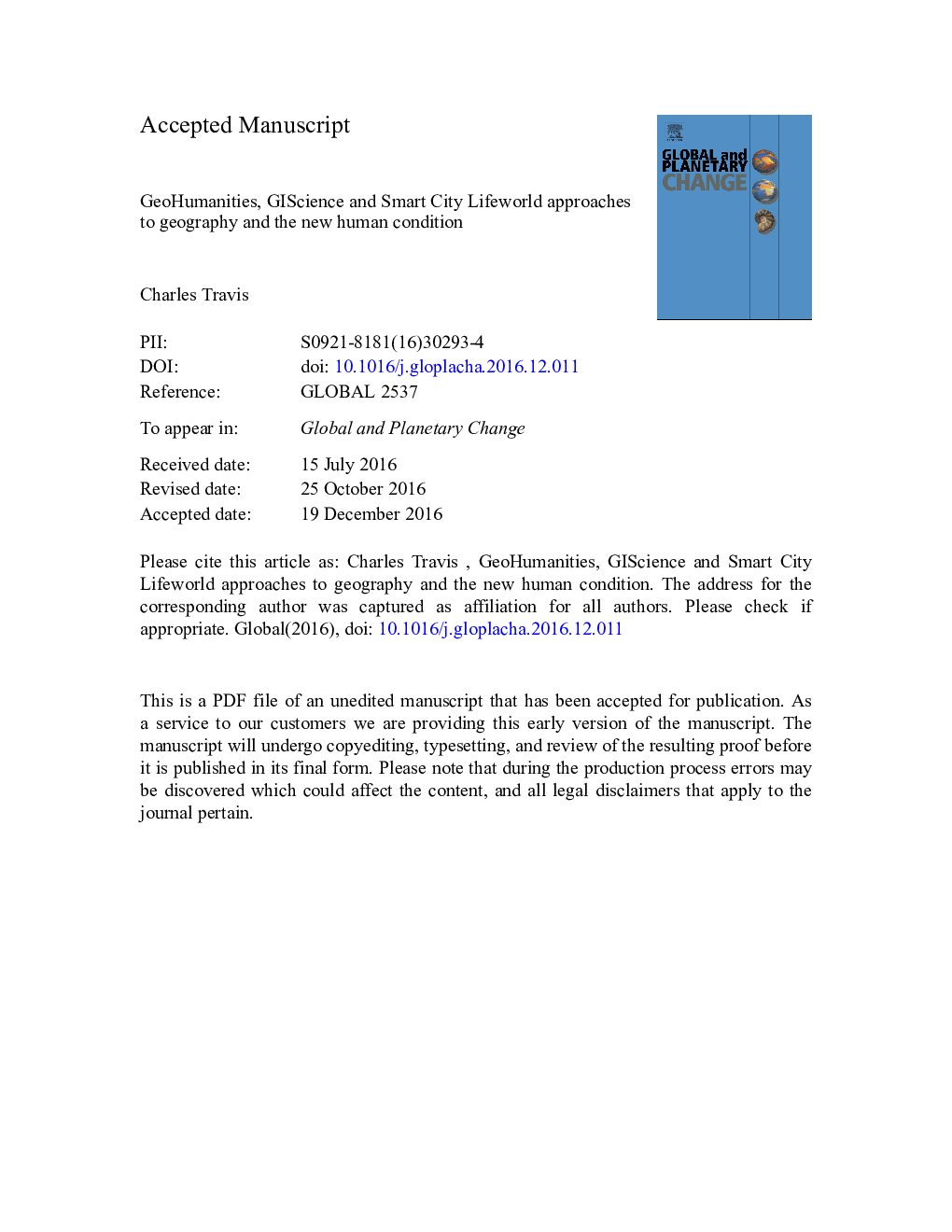| کد مقاله | کد نشریه | سال انتشار | مقاله انگلیسی | نسخه تمام متن |
|---|---|---|---|---|
| 5755233 | 1621626 | 2017 | 27 صفحه PDF | دانلود رایگان |
عنوان انگلیسی مقاله ISI
GeoHumanities, GIScience and Smart City Lifeworld approaches to geography and the new human condition
دانلود مقاله + سفارش ترجمه
دانلود مقاله ISI انگلیسی
رایگان برای ایرانیان
کلمات کلیدی
موضوعات مرتبط
مهندسی و علوم پایه
علوم زمین و سیارات
فرآیندهای سطح زمین
پیش نمایش صفحه اول مقاله

چکیده انگلیسی
The New Human Condition (NHC) is perhaps the largest cognitive challenge in history to human intelligence and agency and concerns our species' ability to cope with the consequences and responsibilities of being the major driver of planetary change in the twenty-first century (Pálsson et al., 2013; Holm et al., 2015). But despite long held assumptions about intra-disciplinary engagements between its “human” and “physical” branches, geography's weakness as a discipline is that it has yet to gather sufficient momentum to collectively shape and implement practical and sustainable climate change policies and actions (Castree, 2014a). However, by considering together the heuristic values of the concepts of the Anthropocene and Planetary Boundaries, the Anglo-American sphere of geography recognizes in either ironic, or unconscious manners that a new strand of environmental determinism (discredited by geographical thought and practice in the early twentieth century) has re-emerged to elide the role of human agency and broadly dominate the discussion of climate change. Mike Hulme (2011, 247) states that “climate determinism” is “a form of analysis and prediction in which climate is first extracted from the matrix of interdependencies that shape human life within the physical world”. Within this discourse it is often the biophysical sphere that is employed to explain the course of human behavior; consequently, this dominating perspective threatens to skew our predictions and understandings of future societies, cultures, climates and destinies. Climate change will certainly constrain human agency, but it also creates the potential for geography to play to its intra and inter disciplinary strengths and begin discussing and addressing human-environmental dilemmas in practical and realistic ways; and secondly, seize the climate change crisis as an opportunity to study where, why and for whom global environmental change matters. Firstly, this paper considers a theoretical balance between the NHC, the Anthropocene and Planetary Boundaries as a way forward for geography to begin addressing the common dilemma of climate change. Within this consideration it engages Anne Buttimer's geographical translation of Martin Heidegger's lebenswelt as a dimension of the NHC. Secondly, the paper discusses how GeoHumanities and GIScience integrations with phenomenology, the digital and environmental humanities and social media generated “Big-Data” can explore the perceptual scales and scopes of the NHC/Anthropocene/Planetary Boundaries conceptual triad. Lastly, it argues that such integrations are salient to the study of emerging Smart City Lifeworlds as a means to engage the increasing urban agencies of global climate change driven by the vagaries of the human condition.
ناشر
Database: Elsevier - ScienceDirect (ساینس دایرکت)
Journal: Global and Planetary Change - Volume 156, September 2017, Pages 147-154
Journal: Global and Planetary Change - Volume 156, September 2017, Pages 147-154
نویسندگان
Charles Travis,